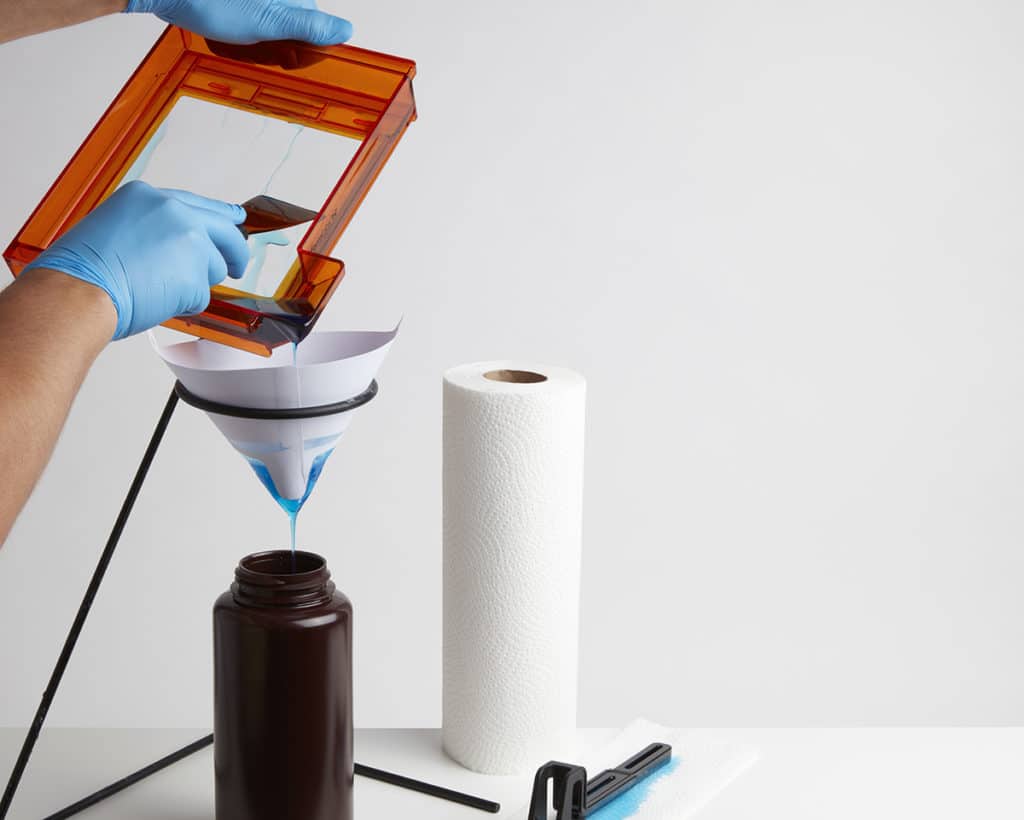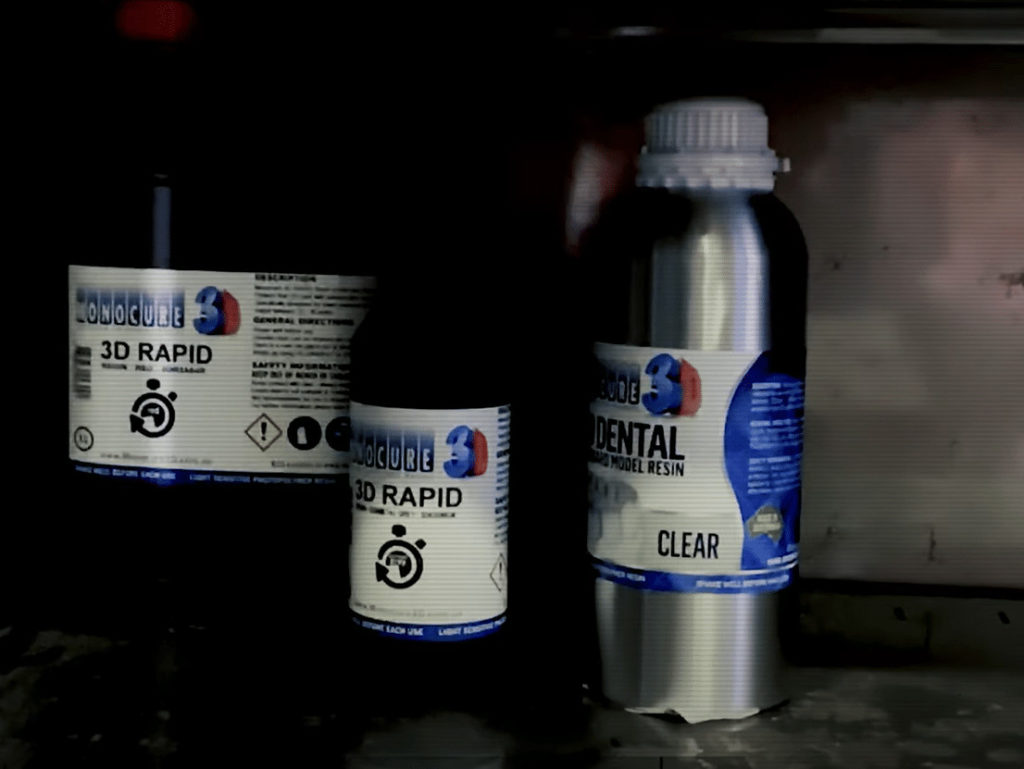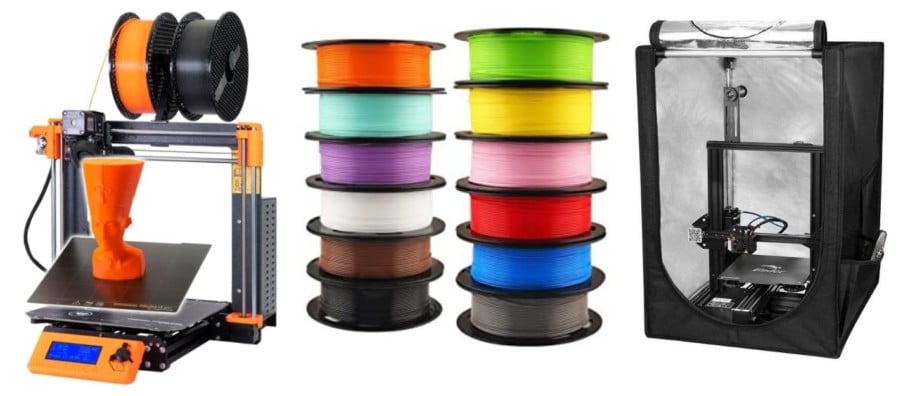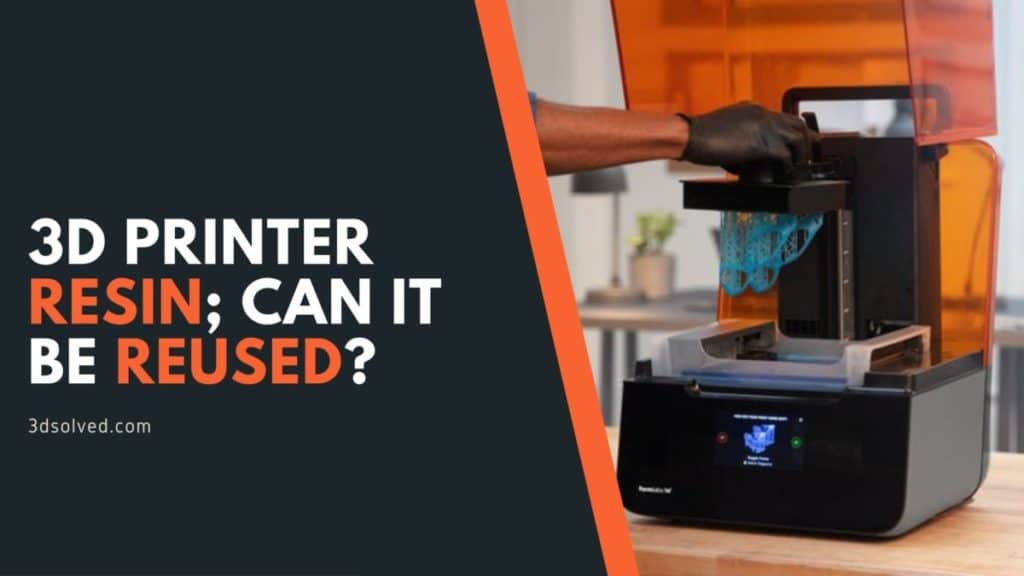3D printing offers a variety of printers with FDM being the most popular one, followed by SLA, MSLA, DLP, SLS, DMLS, SLM, EBM, Material Jetting, DOD, and, of course, Binder Jetting.
We will focus on the SLA technology today which is also known as Stereolythography.
SLA 3D printing has succeeded in gaining a lot of popularity amongst other printing technologies because of it’s ability to create highly accurate, isotropic, and watertight materials and parts in a spectrum of advanced prototypes with excellent features and smooth slim surfaces.
SLA 3D printers utilize a light-reactive thermoset material known as “resin.”
When SLA resins come into contact with particular wavelengths of light, short molecular chains intuitively unite together, polymerizing monomers and oligomers into solidified rigid or flexible geometries.
Science aside, now we will answer some of the most common questions to the dilemmas that new SLA users face when trying to print materials with these printers.
So, without further ado, let’s get started.
Can you reuse 3d printer resin?
Any leftover uncured resin can be reused, but I would advise against pouring it back into the original bottle since you risk contaminating the resin already inside of it. If, however, you do decide to pour the resin back into the bottle, you will have to filter it properly to ensure that the larger pigments of consumed resin are not allowed into the bottle.
If this happens you might be pouring back hardened and already cured resin back into the bottle, and this has the potential of contaminating the resin already inside of it, which will decrease the quality of your future prints.
Once resin is slightly cured, you can’t practically reuse it for 3D printing again. So, make sure that every drop of resin that you intend to reuse for future printing isn’t cured in the slightest and that it can pass through the filters used to put it back in the bottle, otherwise you are going to expose the rest of the unused resin to contamination.
Can you leave Resin in the 3D printer Tank?
You can definitely leave the leftover resin in the tank for a few months if stored in a dark and cool room. Covering the printer in its entirety is also recommended to keep any natural light from reaching the resin, since UV light will harden (cure) it, rendering it unusable.
However, when it’s time to put the 3D printer to use again, I’d advise you to slowly stir the resin using a plastic scraper to detach any hardened parts.
When the 3D printer is not being used, you should cover the vat with either the UV Protection plastic (usually included with the printer), or any other material that will completely block sunlight (just cover the entire printer, it’s easier).
This will make it impossible for natural light to come in contact with the mirror inside and degrading the resin stored underneath.
However, even though you can leave resin in the vat for many months, I would only recommend doing this if you plan on using the resin for another print in a couple of days or weeks, and if so just give it a good stir before you start and it should work just fine.
But if you don’t plan using it all that frequently, then I would recommend that you actually filter the unused resin and store it in a UV resistant bottle in order to protect it from degradation as the conditions for it’s preservation can be more easily managed in the bottle than in the tank.
Can Resin be put back into the original container?

I already mentioned this earlier, but here is the best answer I can give you:
Resin can definitely be put back into the container, but filtering out the hardened and already used resin properly is absolutely essential, otherwise those hardened pieces of resin can contaminate the resin inside of the bottle, which will affect the quality of future prints.
In case you are not able to find a good quality filter and you’re not sure about the whole process is supposed to go, you can store the resin in a different bottle to avoid cross-contamination.
I cannot stress this point enough: If, in any case, cured resin comes in contact with uncured resin, it will render it unusable for future prints.
So, use a filter when pouring it back into the bottle!
Can you melt down and reuse 3D Printer Resin parts, like supports?
SLA resins aren’t thermoplastics and what that means is that it is impossible to melt them down once the polymerization process has happened since the chemical structure formed during the process in which resin is consumed is a densely crosslinked network that can never be melted.
Grinding them into very small pieces is the only process that allows you to get some sort of re-usability out of the left over materials, but melting them down and reusing them, like you could do with filament, for example, is impossible.
Other than that, once used and cured, resin, as well as 3D printed resin parts become, from a technical standpoint, useless.
So, I wouldn’t advise you to spend too much time and effort pursuing this since you won’t be able to reuse/recycle 3D models printed with resin.
You could maybe use them for a creative art project or for decoration, although if you’re thinking about re-using/recycling them it must be because they turned out ugly as hell, so using them as art might be kind of a stretch!
But other than that, they are not going to serve any additional purpose.
If you’re not an artsy type of person, you can just go ahead and dispose them following the steps I will show you in the last part of this article.
How long does 3D printer resin last?
According to ELEGOO, 3D printer resin, if stored at an ambient temperature of around 15 ℃ -35 ℃ and if kept in a dark space away from UV light, has an approximate shelf life of 365 days, or one year. However, if these conditions are met, the resin will be usable a while longer, but the print quality might not be the same.
It’s still very much possible that your resin will be usable even after one full year of use, but you might start to notice a decline in performance when comparing it to when it was first used, and the finished models might be lacking detail and smoothness overall.

There are some tips and tricks to help store and prolong its inevitable doom, however, you want to keep the resin in a dark and cool place as the presence of high temperatures and contact with UV light can drastically reduce its lifespan.
If sealed properly and stored in proper conditions, resin can last for months or even more than one year, but as I mentioned, this depends mostly on how well you manage to store it.
The bottles themselves are designed to be UV resistant, which is why they can be kept on shelves, but even then, keeping it in a cool and dark space, like a drawer, will be even better and increase the lifespan of the resin.
Here’s a quick list of how to store resin the right way:
Storing Resin Correctly
- Keep UV curable resins stored in their containers, far away from direct sunlight and in the temperature spectrum advised by the manufacturer.
- A small headroom of air should be provided (Containers should never be filled up to the top of the opening).
- Do not store resin in regular food refrigerators where you store food and water.
- Do not pour used, uncured resin back into new resin bottles.
How to dispose of resin?
Resin is a very sticky and hazardous liquid, which is why you should never pour the uncured resin down the sink or drain.
This can seriously damage the whole water supply pipes and, in some cases, even damage the whole system.
Not only that, but uncured resin can be re bad for the environment, so dispose of it properly.
So, how to dispose of it properly?
Safety First
Resin can harm and burn your skin, so using any kind of protection against it is of the utmost importance, both when using it to print as well as disposing of it.
My recommendations are;
- Gloves: Latex-, or if possible nitrile gloves should always be used.
- Protective Glasses: If your skin needs to be protected, then your eyes even more so.
- Mask: To protect against toxic fumes.
Disposing of Resin
Uncured resin, which is liquid, can be very useful to print with, but it’s also very toxic, which is why it needs to be cured before you can throw it away.
Luckily, this isn’t as complicated as you might think.
The first step is to cure the printed material itself and any container that might have come into contact with it with isopropyl alcohol or another organic solvent.
Resin in a liquid state can be treated the same way; pour it out on a tray, wait for it to be solidified and then you can throw it away.
However, to cure 3D printed resin parts you may also leave them in the sun for a while and let the UV light take care of the rest.
Essentially, once it’s completely hardened, it’s cured, and this means that it can be thrown in the garbage.
Leftover resin that has been mixed with isopropyl alcohol has to be disposed by usually putting it in a container and taking it to your local waste recycling center.
Conclusion
Resin can be reused, but be careful when putting it back into the original bottle if you want to avoid cross-contamination.
Sadly, it can’t be melted and reused again like you with a filament extruder!
I hope this information was useful.
Have a wonderful day!
Check out our recommended products section

We created a recommended products section that will allow you to remove the guesswork and reduce the time spent researching what printer, filament, or upgrades to get, since we know that this can be a very daunting task and which generally leads to a lot of confusion.
We have selected just a handful of 3D printers that we consider to be good for beginners as well as intermediates, and even experts, making the decision easier, and the filaments, as well as the upgrades listed, were all tested by us and carefully selected, so you know that whichever one you choose will work as intended.
Error processing API data.

Great article, thank you for valuable information 🙂